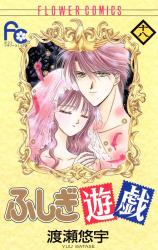When I read this years ago, Watase's works were popular at the time but they had similar love harems, plots, an artistic style that didn't change at all, and even the same humor. I read most of them and it became repetitive, which is originally why I rated this manga a 3/10 as I felt at the time that it didn't really stand out. Fast forward to 2020, I decided to give this manga another standalone chance. Though in some ways I'm glad I did, I was still generally underwhelmed by the entirety of it. It was mostly how I remembered it, especially the humor and artistic sense, but now I realize that the story is more coherent and solid.
WARNING: *In this review, I am referring to Watase by their preferred pronouns so it may be confusing when I am jumping from "they are" to "Watase is". This is information I gained from Wikipedia and am using it as respect for what they want. *
One thing I always appreciate about Watase's story-telling is that they are always able to answer questions that you may have about a character, plot, or action. They are able to fill holes at a later time and in a manner that made sense. This means that Watase left the plot generally open in some areas to allow them to put in a creative plot should they want. Despite all of the numerous character introductions, Watase was able to create a mascot that holds and control them: the priestesses, which I thought was the most effective form of multiple character introductions. Though I am glad that almost every character we meet has a unique backstory, including side characters, I definitely know that they have did not give a lot of Seiryu characters much thought.
In the story, we follow Miaka and her Celestial Warriors to summon Suzaku. So it makes sense that we know every characters' backstory, struggles of individuality, and their contributions to the team. The same justification is not being applied to Yui and her Celestial Warriors though, and it truly felt like they exist solely as enemies. There really isn't anything wrong with this but I wish that there was more diversity in moral ethics, especially since most of the characters have been so memorable. The Seiryu Warriors existed solely for the sake of villainy, which I thought was a little...well...uncreative. But besides this small opinion, I feel that Watase has a good sense of humor despite the typical '90s manga humor (i.e. a character who eats too much, too perverted, too sassy, too etc) and has a great ability to be able to recycle plots but expand it with a different context. This allows Miaka to persevere and become a great leader, despite the occasional selfish request of wanting to be with Tamahome.
The story then has a "part 2" in which Miaka and Tamahome reunite in her world. I felt that this was irrelevant and was something Watase created to milk more out of their love story. It really does nothing to emphasize the original story and really has no connection, besides the new villain being an entity that Nakago had worshipped. The character-building in this part is subpar compared to the previous one, but still generally has good plot even though the characters are not as memorable. However, I am glad that this one is short and isn't an absolute necessity to read after reading the original manga. In this age, reading this might throw someone off but I would still generally recommend this manga to those who are looking for a decent isekai to read.






